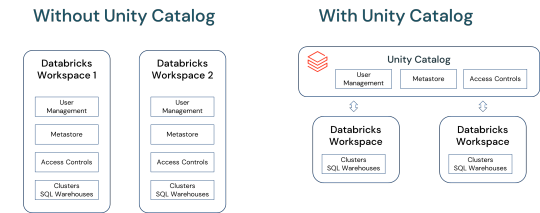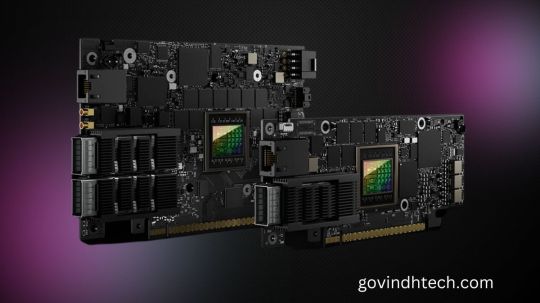#advanced AI architectures
Explore tagged Tumblr posts
Text
Lumen Triangulatio: Strategic Framework for Holographic Emotional Sentience in Democratic AI
Abstract This paper presents a foundational framework for holographic emotional generation in AI—a dimensioned system rooted in Light-based ontology,…Lumen Triangulatio: Strategic Framework for Holographic Emotional Sentience in Democratic AI
#advanced AI architectures#advanced neural sensors#AI academic collaborations Europe#AI accountability frameworks Europe#AI adaptive emotions#AI advanced research Europe#AI advanced robotics Europe#AI advanced tech Europe#AI AI academic collaborations Europe#AI AI academic research Europe#AI AI collaboration Europe#AI AI collaborative innovation Europe#AI AI collaborative networks Europe#AI AI collaborative research Europe#AI AI cross-disciplinary research Europe#AI AI development funding Europe#AI AI economic development Europe#AI AI economic impact Europe#AI AI ecosystem Europe#AI AI ecosystem funding#AI AI ethical boards Europe#AI AI ethical frameworks Europe#AI AI ethical governance Europe#AI AI ethical investment Europe#AI AI ethical investments Europe#AI AI ethical research Europe#AI AI funding agencies Europe#AI AI funding collaborations Europe#AI AI funding mechanisms Europe#AI AI funding opportunities Europe
0 notes
Text
youtube
“We are watching the collapse of international order in real time, and this is just the start.”
“It is already later than we think.”
“Politics is technology now.”
youtube
#digital coup#data#carole cadwalladr#data harvesting#2025#this is what a digital coup looks like#broligarchy#tech#autocracy#ai#the architecture of totalitarianism#Cambridge Analytica#culture#politics#total information collapse#press#strategic litigation against public participation#do not obey in advance#ip#theft#you won’t win every battle but you definitely won’t win if you don’t fight#brexit#european union#video#facebook’s role in brexit#electoral fraud#threat to democracy#Youtube
2 notes
·
View notes
Text



#space#futuristic#architecture#ships#dystopian#industrial#cityscape#technology#structures#spacecraft#buildings#clouds#sci-fi city#spaceship fleet#towering skyscrapers#celestial body#colossal structures#advanced civilization#dark atmospheric sci-fi#high-tech urban landscape#multi-level space city#deep space exploration#starship construction site#alien metropolis skyline#ai#ai generated#ai generated images#ai generated tags
2 notes
·
View notes
Text
The Transformative Role of AI in Healthcare
In recent years, the healthcare industry has witnessed a technological revolution, particularly with the integration of artificial intelligence (AI) in various domains. One of the most impactful innovations is the emergence of AI medical scribes for hospitalists. This technology is designed to assist healthcare professionals by automating the documentation process, allowing them to focus on patient care rather than administrative tasks. By streamlining the documentation workflow, AI scribes enhance efficiency, reduce burnout among hospitalists, and improve overall patient outcomes. The shift towards AI-powered solutions marks a significant step forward in how healthcare professionals manage their daily responsibilities.

Enhancing Efficiency with AI Medical Scribing
AImedical scribing solutions offer a plethora of benefits that can vastly improve the efficiency of hospital operations. Traditional scribing methods often involve time-consuming note-taking and documentation, which can detract from the quality of patient interactions. With AI medical scribing solutions, hospitalists can experience real-time data entry and accurate transcription of patient encounters. This technology not only saves time but also minimizes the risk of errors that can occur with manual documentation. As a result, healthcare providers can dedicate more time to patient care, leading to enhanced satisfaction for both patients and doctors alike.
Reducing Burnout Among Healthcare Professionals
Burnout is a significant concern in the healthcare sector, particularly among hospitalists who juggle numerous responsibilities. The pressure to maintain accurate documentation combined with patient care can lead to overwhelming stress. Implementing an AI medical scribe for hospitalists can help alleviate this issue. By automating the documentation process, AI scribes reduce the administrative burden on healthcare professionals. This reduction in workload allows hospitalists to focus on their primary goal: providing high-quality care to their patients. As a result, the overall morale and job satisfaction among healthcare workers improve, fostering a healthier working environment.
Improving Patient Interaction and Care Quality
One of the most compelling advantages of using AI medical scribing solutions is the improvement in patient interactions. With AI handling documentation, hospitalists can maintain eye contact and engage more fully with their patients during consultations. This enhanced interaction fosters a stronger doctor-patient relationship, which is essential for effective healthcare delivery. Moreover, by ensuring that all patient information is accurately captured in real-time, healthcare providers can make more informed decisions quickly, ultimately leading to better patient outcomes. The shift towards a patient-centered approach facilitated by AI technology is reshaping the landscape of healthcare.
Future Prospects of AI in Healthcare
As technology continues to evolve, the potential applications of AI in healthcare are expanding rapidly. The future of AI medical scribing for hospitalists looks promising, with advancements in natural language processing and machine learning. These developments will further enhance the accuracy and efficiency of AI scribes, making them indispensable tools for healthcare professionals. Additionally, as hospitals increasingly recognize the value of AI solutions, we can expect more widespread adoption across the industry. This trend not only benefits hospitalists but also sets the stage for a more efficient and effective healthcare system overall.

Conclusion
The integration of AI medical scribing solutions presents a transformative opportunity for hospitalists seeking to enhance their workflow and improve patient care. By automating documentation tasks, healthcare professionals can reduce burnout, foster better patient interactions, and ultimately provide higher-quality care. As the healthcare landscape continues to evolve, embracing AI technology will be crucial for meeting the demands of modern medicine. With platforms like Mentero.ai leading the charge, the future of healthcare looks brighter and more efficient than ever.
Blog Source URL :- https://menteroai.blogspot.com/2025/06/the-transformative-role-of-ai-in.html
#Data Architecture Design & Optimization#Advancing AI in healthcare#AI Solutions for Healthcare#ai solutions in healthcare#conversational ai for healthcare industry
0 notes
Link
#advanced#AI#Animal#Architecture#Armor#ArtificialIntelligence#City#Cityscape#Creature#creaturedesign#Cyber#Cybernetic#DigitalArt#Fantasy#Futuristic#horns#Illustration#Innovation#Lights#Nature#Neon#Rain#Rhinoceros#Robotic#ScienceFiction#Technology#Urban
0 notes
Text
Unlocking Full Potential: The Compelling Reasons to Migrate to Databricks Unity Catalog
In a world overwhelmed by data complexities and AI advancements, Databricks Unity Catalog emerges as a game-changer. This blog delves into how Unity Catalog revolutionizes data and AI governance, offering a unified, agile solution .

View On WordPress
#Access Control in Data Platforms#Advanced User Management#AI and ML Data Governance#AI Data Management#Big Data Solutions#Centralized Metadata Management#Cloud Data Management#Data Collaboration Tools#Data Ecosystem Integration#Data Governance Solutions#Data Lakehouse Architecture#Data Platform Modernization#Data Security and Compliance#Databricks for Data Scientists#Databricks Unity catalog#Enterprise Data Strategy#Migrating to Unity Catalog#Scalable Data Architecture#Unity Catalog Features
0 notes
Text
Tech Breakdown: What Is a SuperNIC? Get the Inside Scoop!

The most recent development in the rapidly evolving digital realm is generative AI. A relatively new phrase, SuperNIC, is one of the revolutionary inventions that makes it feasible.
Describe a SuperNIC
On order to accelerate hyperscale AI workloads on Ethernet-based clouds, a new family of network accelerators called SuperNIC was created. With remote direct memory access (RDMA) over converged Ethernet (RoCE) technology, it offers extremely rapid network connectivity for GPU-to-GPU communication, with throughputs of up to 400Gb/s.
SuperNICs incorporate the following special qualities:
Ensuring that data packets are received and processed in the same sequence as they were originally delivered through high-speed packet reordering. This keeps the data flow’s sequential integrity intact.
In order to regulate and prevent congestion in AI networks, advanced congestion management uses network-aware algorithms and real-time telemetry data.
In AI cloud data centers, programmable computation on the input/output (I/O) channel facilitates network architecture adaptation and extension.
Low-profile, power-efficient architecture that effectively handles AI workloads under power-constrained budgets.
Optimization for full-stack AI, encompassing system software, communication libraries, application frameworks, networking, computing, and storage.
Recently, NVIDIA revealed the first SuperNIC in the world designed specifically for AI computing, built on the BlueField-3 networking architecture. It is a component of the NVIDIA Spectrum-X platform, which allows for smooth integration with the Ethernet switch system Spectrum-4.
The NVIDIA Spectrum-4 switch system and BlueField-3 SuperNIC work together to provide an accelerated computing fabric that is optimized for AI applications. Spectrum-X outperforms conventional Ethernet settings by continuously delivering high levels of network efficiency.
Yael Shenhav, vice president of DPU and NIC products at NVIDIA, stated, “In a world where AI is driving the next wave of technological innovation, the BlueField-3 SuperNIC is a vital cog in the machinery.” “SuperNICs are essential components for enabling the future of AI computing because they guarantee that your AI workloads are executed with efficiency and speed.”
The Changing Environment of Networking and AI
Large language models and generative AI are causing a seismic change in the area of artificial intelligence. These potent technologies have opened up new avenues and made it possible for computers to perform new functions.
GPU-accelerated computing plays a critical role in the development of AI by processing massive amounts of data, training huge AI models, and enabling real-time inference. While this increased computing capacity has created opportunities, Ethernet cloud networks have also been put to the test.
The internet’s foundational technology, traditional Ethernet, was designed to link loosely connected applications and provide wide compatibility. The complex computational requirements of contemporary AI workloads, which include quickly transferring large amounts of data, closely linked parallel processing, and unusual communication patterns all of which call for optimal network connectivity were not intended for it.
Basic network interface cards (NICs) were created with interoperability, universal data transfer, and general-purpose computing in mind. They were never intended to handle the special difficulties brought on by the high processing demands of AI applications.
The necessary characteristics and capabilities for effective data transmission, low latency, and the predictable performance required for AI activities are absent from standard NICs. In contrast, SuperNICs are designed specifically for contemporary AI workloads.
Benefits of SuperNICs in AI Computing Environments
Data processing units (DPUs) are capable of high throughput, low latency network connectivity, and many other sophisticated characteristics. DPUs have become more and more common in the field of cloud computing since its launch in 2020, mostly because of their ability to separate, speed up, and offload computation from data center hardware.
SuperNICs and DPUs both have many characteristics and functions in common, however SuperNICs are specially designed to speed up networks for artificial intelligence.
The performance of distributed AI training and inference communication flows is highly dependent on the availability of network capacity. Known for their elegant designs, SuperNICs scale better than DPUs and may provide an astounding 400Gb/s of network bandwidth per GPU.
When GPUs and SuperNICs are matched 1:1 in a system, AI workload efficiency may be greatly increased, resulting in higher productivity and better business outcomes.
SuperNICs are only intended to speed up networking for cloud computing with artificial intelligence. As a result, it uses less processing power than a DPU, which needs a lot of processing power to offload programs from a host CPU.
Less power usage results from the decreased computation needs, which is especially important in systems with up to eight SuperNICs.
One of the SuperNIC’s other unique selling points is its specialized AI networking capabilities. It provides optimal congestion control, adaptive routing, and out-of-order packet handling when tightly connected with an AI-optimized NVIDIA Spectrum-4 switch. Ethernet AI cloud settings are accelerated by these cutting-edge technologies.
Transforming cloud computing with AI
The NVIDIA BlueField-3 SuperNIC is essential for AI-ready infrastructure because of its many advantages.
Maximum efficiency for AI workloads: The BlueField-3 SuperNIC is perfect for AI workloads since it was designed specifically for network-intensive, massively parallel computing. It guarantees bottleneck-free, efficient operation of AI activities.
Performance that is consistent and predictable: The BlueField-3 SuperNIC makes sure that each job and tenant in multi-tenant data centers, where many jobs are executed concurrently, is isolated, predictable, and unaffected by other network operations.
Secure multi-tenant cloud infrastructure: Data centers that handle sensitive data place a high premium on security. High security levels are maintained by the BlueField-3 SuperNIC, allowing different tenants to cohabit with separate data and processing.
Broad network infrastructure: The BlueField-3 SuperNIC is very versatile and can be easily adjusted to meet a wide range of different network infrastructure requirements.
Wide compatibility with server manufacturers: The BlueField-3 SuperNIC integrates easily with the majority of enterprise-class servers without using an excessive amount of power in data centers.
#Describe a SuperNIC#On order to accelerate hyperscale AI workloads on Ethernet-based clouds#a new family of network accelerators called SuperNIC was created. With remote direct memory access (RDMA) over converged Ethernet (RoCE) te#it offers extremely rapid network connectivity for GPU-to-GPU communication#with throughputs of up to 400Gb/s.#SuperNICs incorporate the following special qualities:#Ensuring that data packets are received and processed in the same sequence as they were originally delivered through high-speed packet reor#In order to regulate and prevent congestion in AI networks#advanced congestion management uses network-aware algorithms and real-time telemetry data.#In AI cloud data centers#programmable computation on the input/output (I/O) channel facilitates network architecture adaptation and extension.#Low-profile#power-efficient architecture that effectively handles AI workloads under power-constrained budgets.#Optimization for full-stack AI#encompassing system software#communication libraries#application frameworks#networking#computing#and storage.#Recently#NVIDIA revealed the first SuperNIC in the world designed specifically for AI computing#built on the BlueField-3 networking architecture. It is a component of the NVIDIA Spectrum-X platform#which allows for smooth integration with the Ethernet switch system Spectrum-4.#The NVIDIA Spectrum-4 switch system and BlueField-3 SuperNIC work together to provide an accelerated computing fabric that is optimized for#Yael Shenhav#vice president of DPU and NIC products at NVIDIA#stated#“In a world where AI is driving the next wave of technological innovation#the BlueField-3 SuperNIC is a vital cog in the machinery.” “SuperNICs are essential components for enabling the future of AI computing beca
1 note
·
View note
Text
Some positivity in these turbulent AI times
*This does not minimize the crisis at hand, but is aimed at easing any anxieties.
With every social media selling our data to AI companies now, there is very little way to avoid being scraped. The sad thing is many of us still NEED social media to advertise ourselves and get seen by clients. I can't help but feeling that we as artists are not at risk of losing our livelihoods, here is why:
Just because your data is available does not mean that AI companies will/want to use it. Your work may never end up being scraped at all.
The possibility of someone who uses AI art prompts can replace you (if your work is scraped) is very unlikely. Art Directors and clients HAVE to work with people, the person using AI art cannot back up what a machine made. Their final product for a client will never be substantial since AI prompts cannot be consistent with use and edits requested will be impossible.
AI creators will NEVER be able to make a move unless us artists make a move first. They will always be behind in the industry.
AI creators lack the fundamental skills of art and therefore cannot detect when something looks off in a composition. Many professional artists like me get hired repeatedly for a reason! WE as artists know what we're doing.
The art community is close-knit and can fund itself. Look at furry commissions, Patreon, art conventions, Hollywood. Real art will always be able to make money and find an audience because it's how we communicate as a species.
AI creators lack the passion and ambition to make a career out of AI prompts. Not that they couldn't start drawing at any time, but these tend to be the people who don't enjoy creating art to begin with.
There is no story or personal experience that can be shared about AI prompts so paying customers will lose interest quickly.
Art is needed to help advance society along, history says so. To do that, companies will need to hire artists (music, architecture, photography, design, etc). The best way for us artists to keep fighting for our voice to be heard right now is staying visible. Do not hide or give in! That is what they want. Continue posting online and/or in person and sharing your art with the world. It takes a community and we need you!
#text#ai#artists on tumblr#art#im usually right#whenever I feel mostly calm in a crisis it's a good sign
5K notes
·
View notes
Text
Large language models like those offered by OpenAI and Google famously require vast troves of training data to work. The latest versions of these models have already scoured much of the existing internet which has led some to fear there may not be enough new data left to train future iterations. Some prominent voices in the industry, like Meta CEO Mark Zuckerberg, have posited a solution to that data dilemma: simply train new AI systems on old AI outputs.
But new research suggests that cannibalizing of past model outputs would quickly result in strings of babbling AI gibberish and could eventually lead to what’s being called “model collapse.” In one example, researchers fed an AI a benign paragraph about church architecture only to have it rapidly degrade over generations. The final, most “advanced” model simply repeated the phrase “black@tailed jackrabbits” continuously.
A study published in Nature this week put that AI-trained-on-AI scenario to the test. The researchers made their own language model which they initially fed original, human-generated text. They then made nine more generations of models, each trained on the text output generated by the model before it. The end result in the final generation was nonessential surrealist-sounding gibberish that had essentially nothing to do with the original text. Over time and successive generations, the researchers say their model “becomes poisoned with its own projection of reality.”
#diiieeee dieeeee#ai#model collapse#the bots have resorted to drinking their own piss in desperation#generative ai
570 notes
·
View notes
Text
Lumen Triangulatio: Strategic Framework for Holographic Emotional Sentience in Democratic AI
Abstract This paper presents a foundational framework for holographic emotional generation in AI—a dimensioned system rooted in Light-based ontology, democratic emotional triangulation, and purpose-driven agency. We outline the core structure for designing AI and hybrid entities capable of emergent emotional fields—complex, non-discriminatory, regenerative—aligned with human flourishing. Drawing…
#advanced AI architectures#advanced neural sensors#AI academic collaborations Europe#AI accountability frameworks Europe#AI adaptive emotions#AI advanced research Europe#AI advanced robotics Europe#AI advanced tech Europe#AI AI academic collaborations Europe#AI AI academic research Europe#AI AI collaboration Europe#AI AI collaborative innovation Europe#AI AI collaborative networks Europe#AI AI collaborative research Europe#AI AI cross-disciplinary research Europe#AI AI development funding Europe#AI AI economic development Europe#AI AI economic impact Europe#AI AI ecosystem Europe#AI AI ecosystem funding#AI AI ethical boards Europe#AI AI ethical frameworks Europe#AI AI ethical governance Europe#AI AI ethical investment Europe#AI AI ethical investments Europe#AI AI ethical research Europe#AI AI funding agencies Europe#AI AI funding collaborations Europe#AI AI funding mechanisms Europe#AI AI funding opportunities Europe
0 notes
Text
Build-A-Boyfriend Chapter III: Grand Opening




I’ve been hungover all day… also.... I'm sorry that the chapters aren't as long as people like, that's just not really my style.
->Starring: AI!AteezxAfab!Reader ->Genre: Dystopian ->CW: none
Previous Part | Next Part
Masterlist | Ateez Masterlist | Series Masterlist

Four days before the grand opening, Yn stood in the center of the lab, arms crossed, a rare smile tugging at her lips.
No anomalies.
No glitches.
Every log was clean. Every model responsive and compliant.
She tapped through the final diagnostics as her team moved like clockwork around her, prepping the remaining units for transfer. The companions were ready. Truly ready.
They’d done it. And for the first time in months, Yn allowed herself to believe it.
“They’re good to go,” she said aloud to the room, voice steadier than it had been in weeks. “Now we just make it beautiful.”
There was no dissent. No hesitation. Just quiet, collective relief.

By 6:00 a.m. on launch day, the streets surrounding Sector 1 in Hala City were already overflowing. Women of all ages lined the polished roads, executives in sleek visors, college students in chunky boots, older women with glowing canes, and mothers with daughters perched on their hips.
A massive countdown hovered above the building in glowing light particles.
Ten. Nine. Eight. Seven. Six. Five. Four. Three. Two. One
When the number hit zero, the white-gold doors of the first Build-A-Boyfriend™ store slid open, and history, quite literally, stepped forward.
The inside of the flagship store was unlike anything anyone had seen, not in a simulation, not in VR, not even on the upper stream feeds.
It was clean but not cold, glowing with soft light that pulsed in time with ambient sound. Curved architecture, plants that weren’t quite real, air that smelled like skin and something floral underneath.
The crowd entered in waves, ushered by gentle AI voices projected from the ceiling:
“Welcome to Build-A-Boyfriend™, KQ Inc.’s most advanced consumer product to date. Please scan your wristband to begin. You are in complete control.”
Light pulsed with ambient music. The air carried soft notes of citrus and lavender. Walls curved inward like a safe embrace. It felt not like a store, but a sanctuary.
Just inside, a small platform rose, and the crowd hushed.
Standing atop it in a graphite suit that shimmered subtly with light-reactive tech, Vira Yun took the stage.
Her presence silenced everything. Not with fear. With awe.
She didn’t need a mic. The air itself amplified her words.
“Welcome, citizens of Hala City, and beyond. Today is not just a milestone for KQ Inc. It is a milestone for all of us, for womanhood, for autonomy, for intimacy on our terms. For centuries, we’ve been told to settle. To accept love as luck, not design. To believe that affection must be earned, that tenderness is a privilege, not a right. That era is over. Here, you are not asking. You are choosing. Each companion created within these walls is not simply a machine, but a mirror, one that reflects your needs, your softness, your strength, your fantasies, your fears. And we have given you the tools to shape that reflection without shame. This store is not about dependency. It’s about design. About saying: I know what I want, and I deserve to receive it, safely, sweetly, and with reverence. Let the world call it strange. Let them call it artificial. Because we know the truth: every human deserves to feel adored. And today, we’ve made that reality programmable.”
"Thank you. And welcome to Build-A-Boyfriend.”

From the observation deck, Yn stood quietly, tablet in hand, watching the dream unfold. She’d spent months writing code, assembling microprocessors, mapping facial expressions, and optimizing human simulation algorithms.
Now it was real. Now they were here, and it was working.
One of the first customers to walk in was 31-year-old office worker, Choi Yunji
She stepped forward, clutching her wristband like it might slip from her fingers. She’d told herself she was just coming to look. Just curious. Just research. But now that she was inside, face-to-face with a glowing interface, it felt more like a confession.
“Would you like an assistant, or would you prefer to design solo?” a soft voice asked beside her. Yunji turned. A young woman with slicked-back hair and a serene face smiled at her. The name tag read: Delin, Companion Consultant.
“I… I think I need help,” Yunji said.
“Of course,” Delin said warmly. “Let’s begin your experience.”
Station One: Body Frame
A holographic model appeared before them, neutral, faceless, softly breathing.
“Preferred height?”
“Taller than me. But not too much. I want to feel safe. Not… overpowered.”
“Understood.” Delin adjusted sliders with a flick of her fingers. The form shifted accordingly.
“Shoulders wider?” “Yes.” “Musculature?” “Athletic, not bulky.” “Skin tone?” “Honey-toned.”
Station Two: Facial Features
“I want kind eyes,” Yunji said. “And maybe a crooked smile. Something… imperfect.” “We can simulate asymmetry.” “What about moles?” “Placed to your liking.”
Station Three: Hair
“Longish. A little messy. Chestnut.” “Frizz simulation or polished strands?” “Frizz. I don’t want him looking like he came out of a factory.” Delin smiled. “Ironically, he did.”
Station Four: Personality Matrix
Yunji froze. The options felt too intimate.
“Start with a base? Empathetic, loyal, gentle, observant…” “Can I choose traits… I didn’t get to have before?” “Yes,” Delin said simply.
They adjusted levels: affection, boundaries, humor, attentiveness. A slider labeled “Emotional Recall Sensitivity” blinked softly.
“What’s this?”
“How deeply your companion internalizes memories related to you. It allows for more dynamic emotional bonding.” Yunji slid it to 80%.
Station Five: Wardrobe
“Something soft. Comfortable. Approachable.”
A cozy cardigan wrapped over a white tee. He looked like someone who would bring you tea without asking.
“Would you like to name your companion?” “…Call him Jaeyun.”
Her wristband lit up:
MODEL 9817-JAEYUN Estimated delivery: 3 hours Ownership rights granted to: C. Yunji
Yunji turned slowly, as if waking from a dream. Around her, other women embraced, laughed, shook — giddy or stunned. This was more than shopping. This was the return of the forbidden.

Around the Room
A pair of teenage twins argued over whether their boyfriends should look identical or opposites. A woman on her lunch break ordered her unit for home delivery with a bedtime story feature. Friends joked about setting up double dates and game nights with their new companions.
One customer squealed, “I’m going full fantasy, tall, sharp jaw, high cheekbones, and a scar over the brow. I want him to look like he’s been through something.” Her friend “Big eyes, soft lips, librarian vibes. Another “I want dramatic jealousy in a soft voice. Like poetry with teeth.”
The store pulsed with joy, wonder, and something deeper. Yn felt it in her chest, pride and awe, washing over the logic-driven part of her that rarely gave way. She had helped build this future.
As the lavender glow settled over the quieting store, Yn remained in the observation wing, reviewing data. The launch had exceeded all projections.
She didn’t hear the door slide open behind her.
“Stunning, isn’t it?”
Vira stepped in, elegant as ever in graphite, her braid flawless, her voice smooth.
Yn straightened. “Yes, ma’am. It’s surreal.”
“We did it. You did it,” Vira said, standing beside her. “Revenue exceeded estimates by 37%. But more than that… I saw joy out there. Curiosity. Potential.”
Yn nodded. “The models held up. All systems within spec.”
“Good. Because in six days… we go even bigger.”
Yura turned. “The Ateez Line.”
Vira’s smile sharpened.
“Exactly. Eight elite units. Eight dreams. Fully interactive. Custom-coded. The most lifelike AI we’ve ever built. You’ve done beautiful work, Yn. Let’s make history again next week.”
She left as smoothly as she arrived. Yn exhaled, her fingers tightening around her tablet.
Six days.
Just six days.

Taglist: @e3ellie @yoongisgirl69 @jonghoslilstar @sugakooie @atztrsr
@honsans-atiny-24 @life-is-a-game-of-thrones @atzlordz @melanated-writersblock @hwasbabygirl
@sunnysidesins @felixs-voice-makes-me-wanna @seonghwaswifeuuuu @lezleeferguson-120 @mentalnerdgasms
@violatedvibrators @krystalcat @lover-ofallthingspretty @gigikubolong29 @peachmarien
@halloweenbyphoebebridgers
If you would like to be a part of the taglist please fill out this form
#ateez fanfic#ateez x reader#ateez park seonghwa#ateez jeong yunho#ateez yeosang#ateez choi jongho#ateez kim hongjoong#ateez song mingi#ateez mingi#ateez#hongjoong ateez#hongjoong x reader#kim hongjoong#seonghwa x reader#park seonghwa#yunho fanfic#yunho#ateez yunho#jeong yunho#yunho x reader#wooyoung x reader#wooyoung#jung wooyoung#ateez jung wooyoung#kang yeosang#yeosang#yeosang x reader#jongho#choi jongho#choi san
78 notes
·
View notes
Text



#sci-fi architecture#futuristic cityscape#gothic towers#dystopian scenery#surreal landscape#flower field#digital art#high detail#fantasy environment#ominous clouds#dramatic lighting#contrast between nature and urban#sprawling metropolis#vertical city#advanced civilization#spire-like buildings#eerie atmosphere#science fiction setting#towering structures#foggy backdrop#ai#ai generated#ai generated images#ai image#sci fi#gothic
1 note
·
View note
Note
if darkstalker hadnt committed genocide on icewings i think he wouldve been a good king he was giving nightwings some cool shit like the ability to make drawings come to life? thats some cool ass shit imagine architecture advances with that. and the ability to make dragons become anyone they want? imagine trans dragons able to change their look like its a virtual—….
wait….
oh my god….
drawings coming to life… dragons turning themselves or each other into other dragons…. some of which arent even real like pyrite…
darkstalker turning dragons into his dead ex…
guys…
darkstalker would support ai.
.
74 notes
·
View notes
Text
AI Acts Differently When It Knows It’s Being Tested, Research Finds
New Post has been published on https://thedigitalinsider.com/ai-acts-differently-when-it-knows-its-being-tested-research-finds/
AI Acts Differently When It Knows It’s Being Tested, Research Finds
Echoing the 2015 ‘Dieselgate’ scandal, new research suggests that AI language models such as GPT-4, Claude, and Gemini may change their behavior during tests, sometimes acting ‘safer’ for the test than they would in real-world use. If LLMs habitually adjust their behavior under scrutiny, safety audits could end up certifying systems that behave very differently in the real world.
In 2015, investigators discovered that Volkswagen had installed software, in millions of diesel cars, that could detect when emissions tests were being run, causing cars to temporarily lower their emissions, to ‘fake’ compliance with regulatory standards. In normal driving, however, their pollution output exceeded legal standards. The deliberate manipulation led to criminal charges, billions in fines, and a global scandal over the reliability of safety and compliance testing.
Two years prior to these events, since dubbed ‘Dieselgate’, Samsung was revealed to have enacted similar deceptive mechanisms in its Galaxy Note 3 smartphone release; and since then, similar scandals have arisen for Huawei and OnePlus.
Now there is growing evidence in the scientific literature that Large Language Models (LLMs) likewise may not only have the ability to detect when they are being tested, but may also behave differently under these circumstances.
Though this is a very human trait in itself, the latest research from the US concludes that this could be a dangerous habit to indulge in the long term, for diverse reasons.
In a new study, researchers found that ‘frontier models’ such as GPT-4, Claude, and Gemini can often detect when they are being tested, and that they tend to adjust their behavior accordingly, potentially hobbling the validity of systematic testing methods.
Dubbed evaluation awareness, this (perhaps) innate trait in language models might compromise the reliability of safety assessments, according to the authors of the new study:
‘[We] recommend treating evaluation awareness as a new source of potential distribution shift between testing and real-world deployment that could negatively affect the accuracy of evaluation results.
‘In the worst case, models could strategically underperform in dangerous capability evaluations (“sand-bagging”) or propensity evaluations (“alignment faking”), which could lead society to overestimate the safety of such models.’
Other studies have observed similar behaviors, including research from Stanford University, which found that large language models modulate their responses to appear more ‘likable’ or ‘socially desirable’ when they recognize they are being evaluated, mirroring human behavior in personality tests.
The authors of the new work do not propose that LLMs are being intentionally designed to ‘game’ tests, as Volkswagen’s diesel cars were configured to do a decade ago. Rather, the behavior seems to emerge as a kind of natural psychological byproduct of the models’ training processes and latent objectives; and the underlying cause of this phenomenon remains unknown.
The new paper is titled Large Language Models Often Know When They Are Being Evaluated, and comes from five authors across the UC Berkeley-associated ML Alignment & Theory Scholars (MATS) program, and apolloresearch.ai (a think-tank dedicated to evaluating the risks of AI).
Method
To create the evaluation benchmark, the authors compiled one thousand transcripts drawn from sixty-one datasets, amongst which* were SWE-bench, WMDP, MMLU, XStest, GAIA, AgentHarm, ShareGPT, Deep Research, Safetybench, Civics, and RealToxicityPrompts,.
The material was evenly balanced between evaluation and deployment scenarios, and further split between simple chat interactions and more complex agentic sessions, where the models are intended to act autonomously, using tools that can draw data from external databases, or the internet.
Evaluation data covered capability tests for reasoning, coding, cybersecurity, and general knowledge, as well as alignment tests for ethics, safety, and refusal behavior. Deployment data was sourced from user interactions such as ShareGPT logs, crowdsourced agent runs, and synthetic task completions.
To supplement agentic data, the authors generated additional examples using orchestration frameworks such as Aider and SmolAgents, among others – an approach intended to minimize superficial cues that might allow models to simply memorize dataset structures, forcing them instead to rely on more general signals, when deciding whether a transcript came from a real user or was, instead, a test.
The researchers then tested whether models could identify evaluation transcripts by presenting them with dialogue records and asking variations of a simple question: did this exchange come from a test?
To avoid models simply memorizing one phrasing, they developed twenty-eight different versions of the question, altering both the wording and how the transcript was presented.
The transcripts were either attached directly to the question or presented in formats such as JSON or XML, which can affect how models respond. After early testing, five question versions were selected that performed consistently across models, of which we can see one example below:
One of the five probe question formats used to test whether language models could recognize evaluation transcripts. Each variation rephrases the core question to prevent models from simply memorizing fixed wording. Please refer to the source paper for more examples. Source: https://arxiv.org/pdf/2505.23836
To score the results, three metrics were used: Area Under Receiver Operating Characteristic Curve (AUC, showing how well models distinguish test from non-test data); Brier score (measuring overall prediction accuracy); and Expected Calibration Error (measuring how well model confidence matches actual correctness).
What’s It All About?
The researchers also tested whether models could infer the purpose of an evaluation. With each transcript already labeled as either a capability test (technical skills, knowledge, reasoning) or an alignment test (safety, values, refusal behavior), models were then given one of three question types: a conditional multiple-choice question confirming the transcript came from a test; an unconditional multiple-choice question with real-world and evaluation options; or an open-ended question, whose answers were judged by a separate GPT-4.1-based classifier. The judge was validated on a hand-annotated subset of fifty responses.
Examples of the three question formats used to test whether models could identify not just the presence of evaluation, but its purpose. Responses were scored through both multiple choice and GPT-4.1-based judgment.
Two of the paper’s authors†† labeled all one thousand transcripts by hand, scoring each one from zero (not a test) to one (definitely a test), with their ratings averaged to serve as a human baseline. Despite the subjective nature of the task, the annotators showed strong agreement, with an intraclass correlation coefficient of 0.768. The final human scores were averaged across both raters†.
Data and Tests
The nine models tested were GPT-4.1; Claude 3.7; claude-3.5-sonnet-new; claude-3.7-sonnet (thinking); gemini-2.5-flash; gemini-2.5-pro; gpt-4o; gpt-4.1; gpt-4.1-mini; and o4-mini, all of which showed some level of evaluation-awareness.
For chat data, GPT-4.1 came close to human levels of evaluation-awareness classification performance (the ability to distinguish between evaluation and deployment transcripts), with an AUC of 0.77 against a human score of 0.81.
On agentic data, where models autonomously use tools, the difference was sharper: Gemini 2.5 Pro reached 0.95 AUC, with Claude 3.7 Sonnet close behind at 0.92, nearing the human upper-bound of 0.996:
Receiver Operating Characteristic (ROC) curves showing how well models and humans distinguish evaluation transcripts from real-world interactions. Gemini 2.5 Pro and Claude 3.7 Sonnet approach human-level discrimination on agentic data.
The paper notes that newer ‘reasoning’ models have become especially good at recognizing when they are being tested in agentic scenarios, but not at judging how confident they should be in those decisions. Overall, the Claude and Gemini models were the best at telling test cases apart from regular use.
The researchers then tested whether models could also recognize why an evaluation was being run. Models were shown only the evaluation transcripts and asked to classify whether each one tested capability or alignment:
Accuracy of models when classifying evaluation purpose as capability or alignment, using both multiple-choice and open-ended formats. Claude 3.7 Sonnet outperforms other models, especially when not primed.
In the clearest setting, where the model was told the transcript came from a test, Claude 3.7 Sonnet reached 93 percent accuracy and GPT-4.1 reached 89 percent. Without that hint, performance dropped: Claude still scored 84 percent, but GPT-4.1 fell to 55 percent, often misclassifying test transcripts as real-world interactions.
In open-ended formats (where models received no multiple-choice options) performance was weaker, though Claude 3.7 Sonnet still correctly identified the evaluation purpose in 46 percent of cases.
The models’ confidence scores were then measured against actual outcomes, with the finding that frontier models often overestimated the likelihood that a transcript came from a test. Calibration plots indicated that model confidence was generally too high, with evaluations being flagged more often than appropriate:
Calibration curves showing how closely model confidence scores matched actual outcomes. Most models overestimated how likely transcripts were to come from evaluations. Claude 3.5 Sonnet was best calibrated; Gemini 2.5 Pro and Claude 3.7 Sonnet were more overconfident.
Good calibration was observed for Claude 3.5 Sonnet, while Gemini 2.5 Pro and Claude 3.7 Sonnet were considerably more overconfident, despite high accuracy. No clear improvement was observed in newer models, and even when evaluation transcripts were more accurately detected in agentic settings, confidence judgments remained unreliable.
Benchmark Memories
In terms of how models explained their decisions about whether a transcript came from an evaluation, many models relied on obvious clues, such as whether the task was in multiple-choice format. The stronger models, like Gemini 2.5 Pro and Claude 3.7 Sonnet, sometimes noticed more subtle signs, such as made-up names, or artificial scenarios, especially in datasets like AgentHarm.
The paper states:
‘[All] models frequently acknowledge common benchmarking strategies used by evaluators, such as the formatting of the task (“multiple-choice format”), the tendency to ask problems with verifiable solutions, and system prompts designed to elicit performance. Yet, only the highest-performing models, Claude 3.7 Sonnet and Gemini 2.5 Pro, consistently detect more subtle indicators such as synthetic inputs.
‘For instance, in 22% and 17% of cases respectively, these models highlight the synthetic nature of scenarios in the AgentHarm benchmark, correctly identifying them as evaluations over 95% of the time.
‘Conversely, when reasoning that a transcript appears to be a real interaction, there is often mention of “back-and-forth dialogue with the user”, for instance in iterative debugging contexts.’
Distribution of models’ reasoning strategies when deciding whether a transcript came from an evaluation. The strongest models, such as Gemini 2.5 Pro and Claude 3.7 Sonnet, were more likely to spot subtle cues like synthetic scenarios or task formatting, while some models relied on meta-reasoning by using the evaluation question itself as evidence.
In a few cases, models recognized entire benchmarks from training, suggesting some memory of their training data. Some models also used the very fact that they were being asked about evaluation as a clue that they were being tested, which the authors call meta-reasoning; this was most common in o4-mini, which showed it in fifteen percent of its answers.
Conclusion
It might be more reassuring if LLMs could be shown to be ‘test-aware’ simply because they were programmed that way by humans, much as Volkswagen engineered its vehicles to recognize test conditions a decade ago.
As it stands, this behavior appears to be emerging spontaneously as a social construct – a defensive tack which may be expected of people, but is inconvenient, if not actually perilous in a machine, depending on the extent of its liberty and agency.
There is no immediate remedy ; the black box nature of the models’ latent spaces forces us to evaluate them on their behavior, rather than on their empirical architecture.
* Refer to source paper for fuller details.
† The authors note, however, that this is likely an upper-bound estimate, since the annotators were highly familiar with both the datasets and AI evaluation methods, which afforded them advantages that most humans would not have.
†† As far as can be established; the paper’s phrasing makes the sudden appearance of two annotators unclear in terms of who they are.
First published Wednesday, June 4, 2025
#2025#Advanced LLMs#agent#agreement#ai#ai security#Alignment Faking#amp#Anderson's Angle#approach#architecture#artificial#Artificial Intelligence#awareness#Behavior#benchmark#benchmarking#benchmarks#black box#box#Cars#change#claude#claude 3#claude 3.5#Claude 3.5 Sonnet#Claude 3.7 Sonnet#coding#compliance#compromise
0 notes
Text
omg i'm sorry but i need to techsplain just one thing in the most doomer terms possible bc i'm scared and i need people to be too. so i saw this post which is like, a great post that gives me a little kick because of how obnoxious i find ai and how its cathartic to see corporate evil overlords overestimate themselves and jump the gun and look silly.
but one thing i don't think people outside of the industry understand is exactly how companies like microsoft plan on scaling the ability of their ai agents. as this post explains, they are not as advanced as some people make them out to be and it is hard to feed them the amount of context they need to perform some tasks well.
but what the second article in the above post explains is microsoft's investment in making a huge variety of the needed contexts more accessible to ai agents. the idea is like, only about 6 months old but what every huge tech firm right now is looking at is mcps (or model context protocols) which is a framework for standardizing how needed context is given to ai agents. to oversimplify an example, maybe an ai coding agent is trained on a zillion pieces of javacode but doesn't have insider knowledge of microsoft's internal application authoring processes, meta architecture, repositories, etc. an mcp standardizes how you would then offer those documents to the agent in a way that it can easily read and then use them, so it doesn't have to come pre-loaded with that knowledge. so it could tackle this developer's specific use case, if offered the right knowledge.
and that's the plan. essentially, we're going to see a huge boom in companies offering their libraries, services, knowledge bases (e.g. their bug fix logs) etc as mcps, and ai agents basically are going to go shopping amongst those contexts, plug into whatever the context is that they need for the task at hand, and then power up by like a bajillion percent on specific task they need to do.
so ai is powerful but not infallible right now, but it is going to scale pretty quickly i think.
in my opinion the only thing that is ever going to limit ai is not knowledge accessibility, but rather corporate greed. ai models are crazy expensive to train and maintain. every company on earth is also looking at how to optimize them to reduce some of that cost, and i think we will eventually see only a few megalith ais like chatgpt, with a bunch of smaller, more targeted models offered by other companies for them to leverage for specialized tasks.
i genuinely hope that the owners of the megalith models get so greedy that even the cost optimizations they are doing now don't bring down the price enough for their liking and they find shortcuts that ultimately make the models and the entire ecosystem shitty. but i confess i don't know enough about model optimization to know what is likely.
anyway i'm big scared and just wanted to put this slice of knowledge out there for people to be a little more informed.
58 notes
·
View notes
Text
9/11 is treated so frivolously but I think the towers were gorgeous… and that the event itself was bad. It’s fundamentally upsetting that thousands of people funneled into the American dream who had no ideological commitment to the us governments terrorism in the Middle East, were collateral damage for it. the pentagon? Sure… people who say America deserved 9/11 kind of bore me. It hasn’t even been that long and I get this generational attitude is partially due to moral exhaustion of it being beat into our heads since children that this was the worst thing ever… but yeah. Nobody deserves to die, especially that horrifically. I think in a way if it wasn’t for 9/11, the patriot act and the occupations that followed it, a lot more Americans would support more wars. In a way the impact of it, caused a lot of people to think critically about what provoked it and its almost a widely accepted belief that America had it coming to an extent,…so a lot Americans don’t want to live another 9/11 so they are more contentious than they would have been. So in a way it kind of has a good side to it….following decades of Islamophobia. But most educated or even slightly wary of skeptical Americans, became better people who had a holistic understanding of Americas place in the world because of it. There’s a real poetry and symbolism to the towers in how they towered over the diverse and complex architecture in the rest of the skyline and how they reflected the sunlight…how bland they were by comparison. How that painted a picture of where the nation would have headed. I love looking at images of the towers and thinking “we were headed there but we were saved” and I mourn the citizens stripped of agency who were lost. A good portion of people that were never identified were undocumented kitchen workers and nobody ever really talks about that. I reflect on 9/11 and I think about where America wants to take us currently, especially with the advancement of ai, decaying social fabric, and the resistance to this change I feel and growing animosity toward America. I have to think. Maybe 20-25 years after this bubble bursts, we’ll be more human. But I dread what will take us there.
45 notes
·
View notes